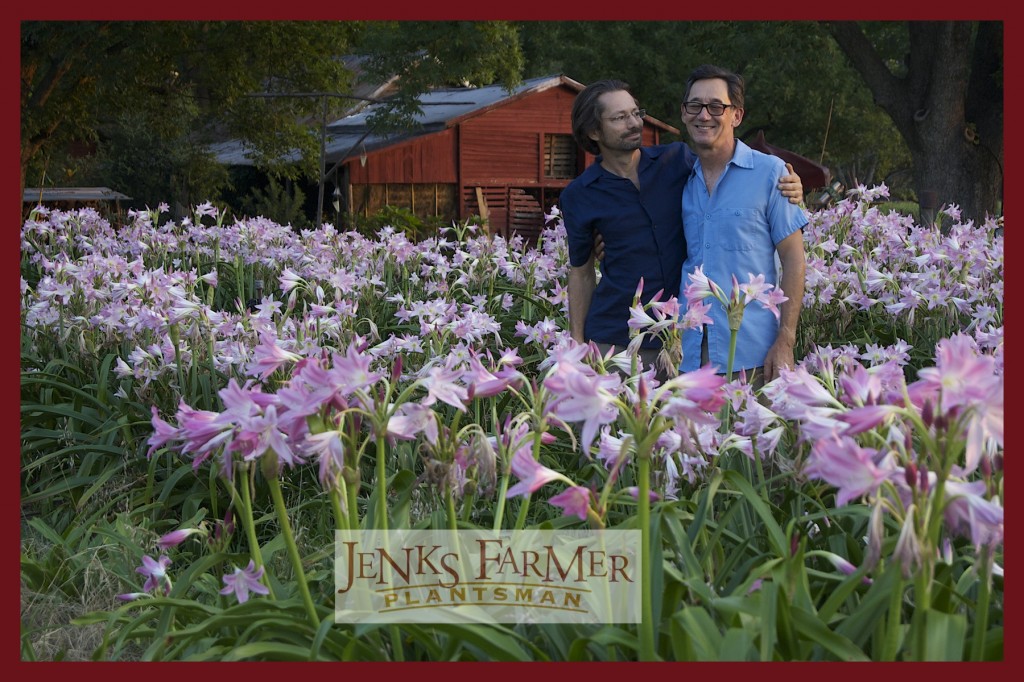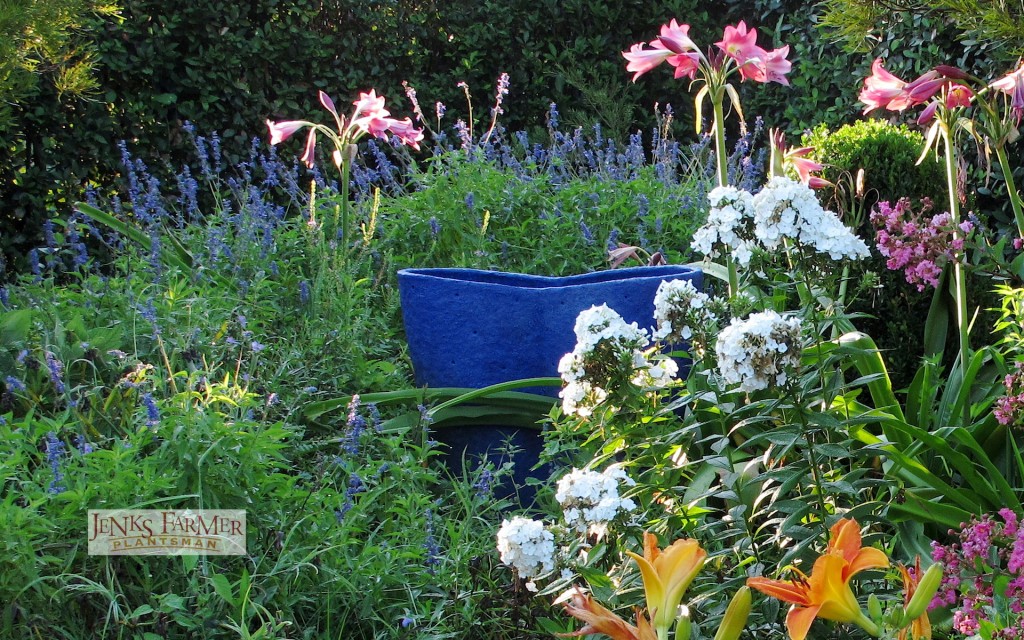Cold Hardy Crinum Lilies: Complete Guide to Growing in Zones 6
Expert guide: How to successfully grow Southern crinum lilies in cold northern climates with proven varieties and techniques
For decades, crinum lilies have been considered strictly Southern plants—those magnificent bulbs with dramatic foliage and exotic blooms that seemed destined only for warm, humid gardens. But thanks to a group of peers from Florida to Texas, including pioneering horticulturists like Jenks Farmer, author of “Crinum: Unearthing the History and Cultivation of the World’s Biggest Bulb,” we now know that many crinum varieties can thrive much farther north than previously believed.
Jenks Farmer, was the founding curator and garden designer of Riverbanks Botanical Garden, where he established the largest accessioned collection of crinum in the United States. For over thirty years, he has been testing and proving the cold hardiness of various crinum species for years. Many staff and volunteers from Riverbanks have been part of this renaissance in understanding crinum cold hardiness. Jenks’ crinums now thrive at the Pittsburgh Zoo. The former curator of the Missouri Botanical Garden also tested and proved many of Jenks’ bulbs. Northern botanical gardens and home gardeners are proving their adaptability beyond traditional Southern climates. His work has revealed that “crinums can be very cold-hardy, but it’s certainly dependent on the species.”
The Most Cold-Hardy Crinum Lily Varieties for Northern Gardens
Based on Jenks Farmer’s extensive research and testing, here are the top cold-hardy crinum lilies that can survive and thrive in northern gardens:


Crinum bulbispermum (Orange River Lily) – The Ultimate Cold-Hardy Crinum
Crinum bulbispermum is the most cold-hardy of all crinum species and is “fully hardy in Zone 6A” with reports of surviving temperatures as low as -20°F. Jenks Farmer notes he has seen this variety growing in Copenhagen and has friends who grow it successfully in Boston and Connecticut, where it “even sets seed and seeds itself in his garden.”
- Hardiness: Zone 6a
- Flowers: White with pink to red stripes, funnel-shaped
- Foliage: Distinctive gray color and curving
- Bloom time: Depends on Zone. In Zone 6; June. Zone 7; May. Zone 8 April. Zone 9 February.
- Special notes: With winter protection of lightweight mulches like leaves in Zones 6. Avoid winter wet soils.

Crinum ‘Cecil Houdyshel’ – Proven Cold Hardy Variety
This beautiful shell pink variety has been growing successfully “in the gorillas’ exhibit at the Pittsburgh Zoo for a long time,” demonstrating its cold tolerance in Pennsylvania’s climate.
- Hardiness: Zone 7
- Flowers: Shell pink. Flowers more than any other crinum
- Special notes: Proven performer in home, commercial, and highway planting

Crinum ‘Claude Davis’ – A Rich Pink Crinum
This variety is noted for being cold-hardy “into the Midwest” with rich, warm pink flowers that “hold color even in full sun.”
- Hardiness: Zone 7, possibly colder
- Flowers: Rich pink with light, sweet fragrance
- Bloom time: Late May and June
- Special notes: Interplant with Saliva, Switch grass or other late summer growing perennials as the foliage of this crinum is not handsome – let other plants cover it after it flowers
Jenks Farmer’s Cold Hardy Collection – Expert-Selected Varieties
Jenks Farmer offers a special “Cold Hardy Collection” featuring three proven varieties: ‘Milk and Wine’ (white with pink stripes), ‘Pink Flamingo’ (pale pink), and ‘Orange River Lily’ (white and pink-purple).
When to Plant in Cold Climates
Spring Planting (Recommended)
The optimal planting window for cold-climate gardeners is April through June. Although crinum lilies “can be planted year-round,” it’s best to “avoid fall and winter to prevent cold damage.” Spring planting allows the bulbs to:
- Establish strong root systems before winter
- Take advantage of the full growing season
- Build energy reserves in the bulb for cold-weather survival
Summer Planting (Acceptable)
You can continue planting through July and August, but keep these considerations in mind:
- Provide extra water during hot summer months
- Mulch heavily to conserve moisture
- The bulbs will have less time to establish before dormancy
- Plant bulbs 18 inches deep in Zone 6 for better cold protection
Planting Depth for Cold Climates
Plant the large bulbs below your soil freeze line. A general rule of thumb is 8 to 12 inches deep.

Success Tips for Northern Growers
- Start with proven varieties: Focus on Jenks Farmer’s recommended cold-hardy selections
- Plant deep: Use the 12-inch or below your freeze line depth recommendation
- Mulch heavily: Apply 4-6 inches of organic mulch for winter protection
- Choose microclimates: Plant in “protected microclimates, normally the southern exposure.”
- Be patient: Newly planted crinums “can take a year or two to produce the blossoms” and need to “settle in for a season or two before they begin blooming freely”
Final Thoughts
Thanks to the pioneering work of experts like Jenks Farmer, northern gardeners no longer need to admire crinum lilies from afar. As Farmer notes, while “crinums are never going to become the peonies of the North,” they offer “intrepid gardeners” and plant collectors the opportunity to grow these spectacular bulbs successfully.
Whether you choose to plant the ultra-hardy Orange River lily directly in your Zone 6 garden or grow a collection in containers that can be protected in winter, crinum lilies offer an exciting way to bring exotic beauty and dramatic scale to northern landscapes. With proper variety selection, planting techniques, and winter care, these “world’s biggest bulbs” can become treasured additions to cold-climate gardens.

/Check out Jenks interactive map showing locations and photos of where his clients and peers grow crinum across the United States. LINK
For more information and secrets of Southern gardening and Southern plants like crinum varieties consult Jenks Farmer’s comprehensive book “Crinum: Unearthing the History and Cultivation of the World’s Biggest Bulb” and visit his nursery website for proven cold-hardy selections.
